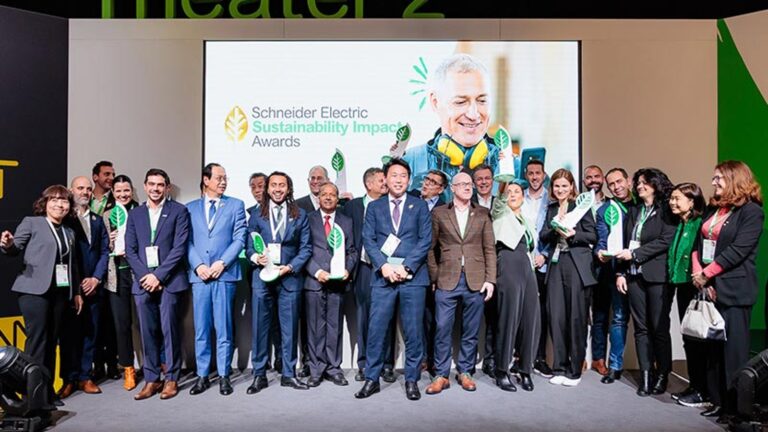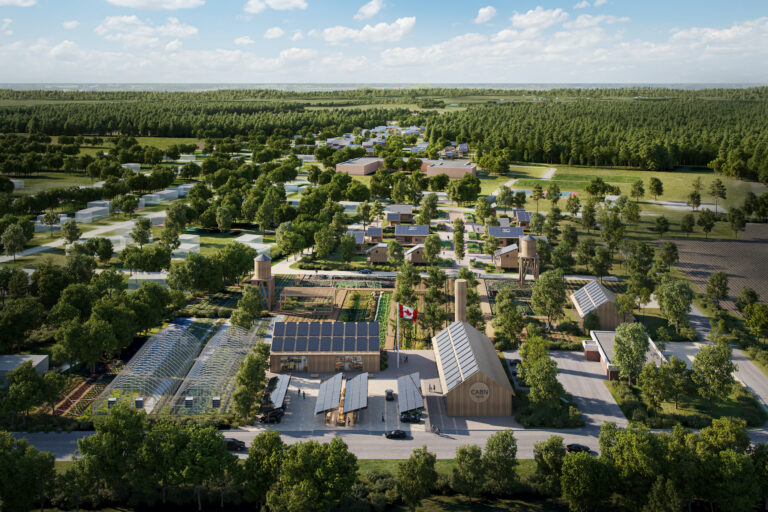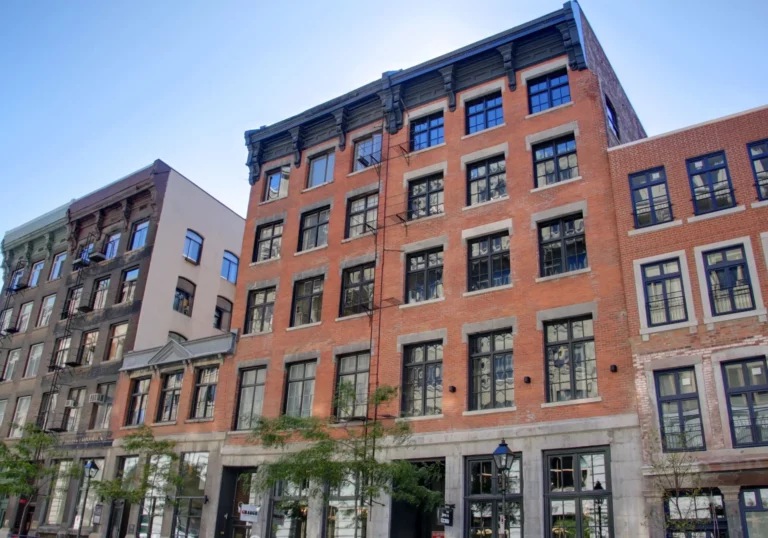Sunday, July 6, 2025
By Mark Douglas Wessel
A telling observation made by the World Economic Forum is that cities, where over half of the planet’s population now live, only cover three per cent of the earth’s land surface. Yet they account for 70 per cent of all carbon emissions.
And as noted in a UN Environment Program report, the buildings and construction sector are “by far the largest emitters of greenhouse gases, accounting for a staggering 37 per cent of global emissions.”
Arguably the only good news surrounding those statistics is the building sector is making some progress “centered around reducing the operational carbon emissions of buildings… stemming from heating, cooling and lighting.”
Going deep
Yet another positive is that as growing urban centres from around the world recognize that if national net-zero goals are going to be achieved, cities need to embrace carbon neutrality as well.
In 2021, the City of Toronto set greenhouse gas (GHG) emissions reduction targets of 45 per cent lower (compared to 1990 levels) by 2025, 65 per cent by 2030 and net-zero by 2040. And a year later in direct support of those goals, launched its Deep Retrofit Challenge (DRC).
Backed by a $5 million investment from the federal government through Natural Resources Canada’s (NRCan) Green Infrastructure Program, DRC is a competition style program whereby participating (privately owned) buildings that undergo these deep energy retrofits are eligible to receive grants of up to $500,000 to help offset costs related to achieving significant GHG emissions and energy reductions.
“One of the big objectives of this (program) is to make the retrofit journey less challenging by learning from what building owners go through during the retrofit journey,” observes Rae-Anne Miller, speaking in the capacity of manager, Public Energy Initiatives Environment & Climate Division. “So really looking step by step at what they’ve been doing, learning what some of their challenges and barriers are and then being able to share those more broadly to help the retrofit industry in general.”
When the DRC was formally launched in 2022, the city declared that it would encourage “deeper than planned energy retrofits in 10 to 16 privately owned buildings,” with the proviso that these projects be completed in early 2025. Qualification criteria for the program included: reducing GHG emissions and energy costs by at least 50 per cent; providing a whole-building energy model for future case studies; and meeting a 20-year payback period or better.
However, in the wake of that announcement, only eight project submissions were accepted by the October 31, 2022, deadline. And since then, two of the eight have dropped out. Reflecting on this loss, Miller observes that “deep retrofits are a big challenge… and because this program is grant funded from NRCan, we have an end date. So there were some constraints from a financial and timeline perspective,” for the two building retrofits that dropped out.

Embracing a net-zero future
One company that knows full well the trials and tribulations of retrofitting buildings to net zero is Ottawa-based Minto, which has openly embraced a net-zero future as part of their corporate vision.
Just a few weeks before Toronto launched its DRC program in the spring of 2022, Minto announced that they had chosen their Castleview rental community in Ottawa as a pilot energy retrofit site that would take place over a three to five year period at a cost of $19 million. The investment would cover window replacements, envelope overcladding, full in-suite and central HVAC replacement and “potentially rooftop photovoltaics.”
However two years on, Adeyemi Adewunmi, Minto’s senior building performance specialist admits candidly that “the project is on hold right now because the team is still trying to figure out what to do with the building… so what we are looking at (as the next stage) are engineering studies.”
Scaling things up
Much like an inverted pyramid, in order for cities to reach their net-zero goals, they’ll have to learn quickly from pilot projects such as Toronto’s DRC initiative and find a way to fast-track the retrofitting of not just a handful, but hundreds of thousands of buildings across the country.
From his perspective, Brendan Haley, the senior director of Policy Strategy at Efficiency Canada feels that “the big innovation is (creating) market development teams,” which aren’t solely focused on delivering a particular project but are “trying to bring the demand side of the market together… aggregate it and then bring the supply side of the market together and facilitate a new way of retrofitting at scale.”
The net effect of which would be to “remove bottlenecks and getting people to think about (retrofitting) not just one or two buildings… but let’s do 100 buildings all at once.” And if retrofits were done at scale, it would force industry players to sort out for instance, how to manufacture building envelops to meet that demand.
To facilitate such a transition while addressing the inherent economic challenges of building retrofits, Haley observes that “if there’s a role for the public sector at all, it’s in triggering that (scaling up) process… I would argue that a strategic use of public funds… is a new construction system.”
Adopting a sum of the parts is greater than the whole explains much of the reasoning behind the Climate Smart Buildings Alliance (CSBA). Founded by EllisDon, Mattamy Homes and RBC, CSBA is being positioned as a “think and do tank” comprised of building sector players, government, researchers and innovators focussed on developing innovative solutions tied to reducing building emissions and energy consumption.
CSBA, director David Messer shares that the intention of this coalition is not to create an industry association but rather a nimble, mission-focussed group “wanting to lead change.” That said, the group continues to grow. “Right now we are expanding the group… so CIBC is involved (also) AtkinsRéalis and we’re reaching out to other developers and people in the consulting world as well.”
However, one of the biggest challenges that remains stems from the recurring theme of “where’s the money?” Messer notes “Eighty per cent of decarbonization has been funded by the federal government to date and it’s unlikely they’re going to be able to pay for every building in the country to be retrofitted.”

Making energy efficient investments
Nonetheless, until the private sector shifts to accommodate major retrofit projects, institutions such as the Canadian Infrastructure Bank (CIB) continue to be one of the primary drivers of the transition to net zero.
Through its Building Retrofits Initiative, to date CIB has invested approximately $1.2 billion in lower interest loans towards modernizing aging buildings across the country. “We like to think of ourselves as a catalyst for the low carbon retrofits solution,” says Aaron Berg, director of Energy Efficient Investments at CIB.
The way their investment model works Berg says is “our minimum threshold for eligibility at the project level is a 30 per cent reduction in carbon pollution. And we structure our interest rates to incentivize 50 per cent or greater.” Building owners that meet or surpass the latter target he says are entitled to loans at one per cent less than the Bank of Canada rate.
All told, Berg says CIB is working with approximately $3 billion capital and as previously mentioned $1.2 billion of that has already been allocated. And while that figure might seem like a lot, Berg is quick to put things into perspective, citing a recent report produced by BMO entitled High Rise, Low Carbon which projects that Canada will need to invest $40 billion to meet its net zero building challenge, 60 per cent of which will need to go towards the retrofit of existing structures.
As daunting as those figures seem, Berg says he is encouraged by the fact that while “historically [banks] have not really developed specific financial products for decarbonization retrofits… I think they are increasingly interested in supporting decarbonization retrofits.”
An industry problem to solve
The flipside of financial considerations when weighing out the benefits of completing a deep energy retrofit comes down to which actions and methodologies to deploy in order to achieve the desired decrease in GHG’s and reduced heating and cooling costs.
And to its credit, Minto has embraced the best practices sharing model mandated by the City of Toronto for its DRC program. So while the company is still coming to terms with what comes next with its Castleview project, work is now well underway with its 61 Yorkville Avenue building in Toronto… one of the six remaining sites in that initiative.
Minto has also completed a deep retrofit engineering study on two of its older properties (including Castleview), available for anyone to review and learn from. Dan Dixon, Minto’s senior VP of Corporate Affairs attributes this open source mindset to the fact that “we see (getting buildings to net zero) as an industry problem to solve… as opposed to we’re going to try to get some kind of competitive advantage versus our competitors. The industry is going to face challenges to get this done and we’re going to have to learn from each other.”
Dixon says the 61 Yorkville Ave. project is on target to be completed by the end of 2024. “We’ve actually done a duct seal project there and throughout many of the buildings in our portfolio… minimizing air losses and maximizing the efficiency of the mechanical system. And we’ve seen good results there. We also have a building automation system in place, and we are monitoring and managing to optimize the performance of the building. And we’ll go through that process again once the heat pumps are in place.”
The elephant in the room
In her role as director of the Pembina Institute’s buildings program, Betsy Agar is focussed on system changes that will help to accelerate the decarbonization of homes and buildings. However beyond that goal or Beyond Energy Efficiency, which also happens to be the name of a recent report Agar co-authored, is “there are far more benefits and reasons to be upgrading buildings that we know are worth keeping,” she observes.
“The real elephant in the room is the 80 per cent of homes that are going to still be standing. Let’s say two thirds of buildings will still be standing in 2050,” she says. “This is a major challenge for us to be able to meet that net-zero target.”
As she sees it, we need a “whole framing around affordability (because) there is a very good political reason to make sure that the building stock we have… will continue to serve us, particularly in a changing climate.”
There is a critical, quality of living component Agar feels we can’t lose sight of as well. “From our perspective, deep retrofits are really the only climate action that can ensure Canadian homes are healthy, safe, resilient to extreme weather and affordable to heat and cool.”
Mark Douglas Wessel is an urban journalist and communications consultant. He writes a regular column called Green Living for Postmedia.
This article originally appeared in affiliate publication, ReNew Canada, available here.
Featured image credit: Distillery District, Toronto, Ont. Getty Images












